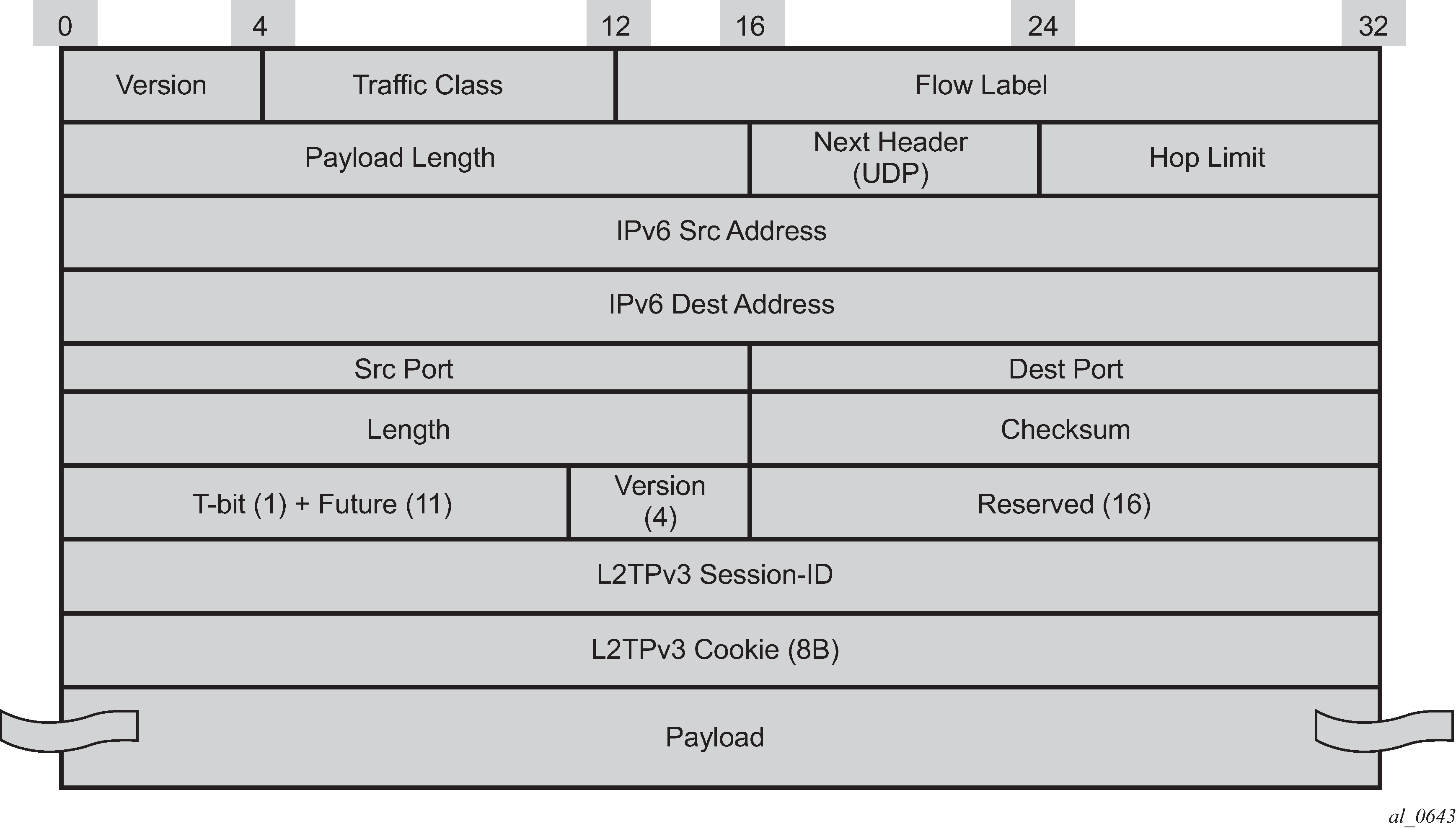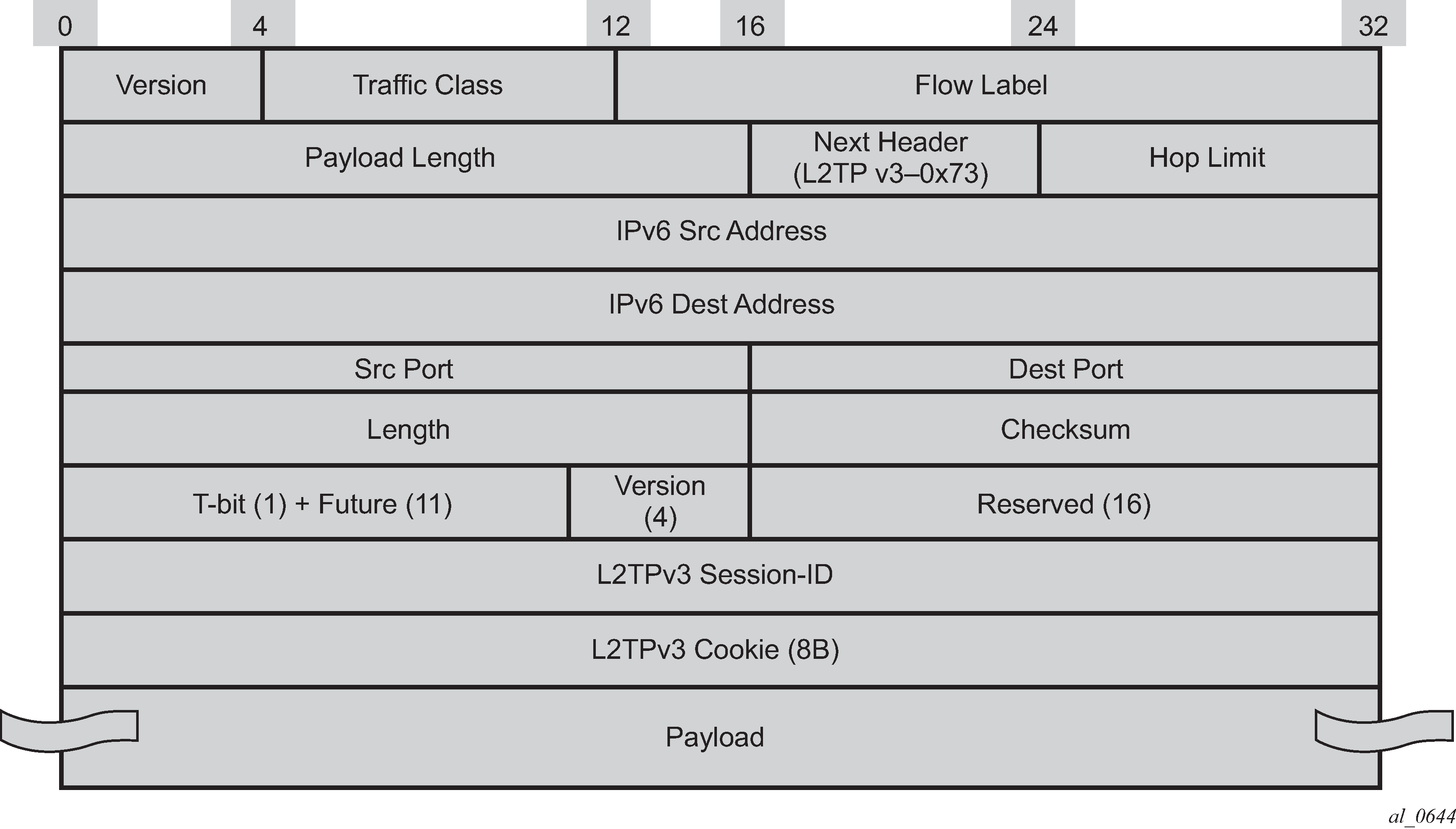This feature adds support for Layer 2 over soft-L2TPv3 tunnels. L2TPv3 is over UDP and both IPv4 and IPv6 transport is supported. The encapsulation with UDP allows NAT traversal. Soft-L2TPv3 tunnels are terminated on WLAN-GW IOM/IMM. All features supported with soft-GRE tunnels are supported identically with soft-L2TPv3 tunnels. L2TPv3 tunnels are stateless and there is no support for control channel, dynamic exchange of session-id and cookie, and L2-specific sublayer for sequencing. Received cookie in L2TPv3 is reflected. The AP can encode it’s MAC address in 8-byte cookie. Based on configuration, the cookie can be ignored and just reflected, or parsed to interpret AP-MAC from the least significant 6 bytes. Both L2TPv3 over IP and L2TPv3 over UDP encapsulation is supported. L2TPv3 tunnels are load-balanced from ingress IOMs to WLAN-GW IOMs based on source IP address. Figure: L2TPv3 over UDP (IPv6 transport) and Figure: L2TPv3 over IP (IPv6 transport) shows these encapsulations with IPv6.


Enabling multi-tunnel-type on a wlan-gw group-interface allows multiple tunnel types (such as soft-GRE and L2TPv3) to the same gateway tunnel endpoint. Mobility between APs reachable with soft-L2TPv3 tunnels and APs reachable by soft-GRE tunnels is supported. There is feature and scale parity between soft-GRE and soft-L2TPv3 tunnels. The local tunnel gateway endpoint and other configurations parameters are shown below.
A:Dut-C>config>service>vprn>sub-if>grp-if>wlan-gw# info
----------------------------------------------
gw-addresses
address 10.1.1.3
address 2001:db8::
exit
gw-ipv6-address 2001:db8::0
learn-ap-mac
mobility
hold-time 0
multi-tunnel-type
trigger data iapp
exit
tunnel-encaps
learn-l2tp-cookie always
exit
wlan-gw-group 1
no shutdown
----------------------------------------------